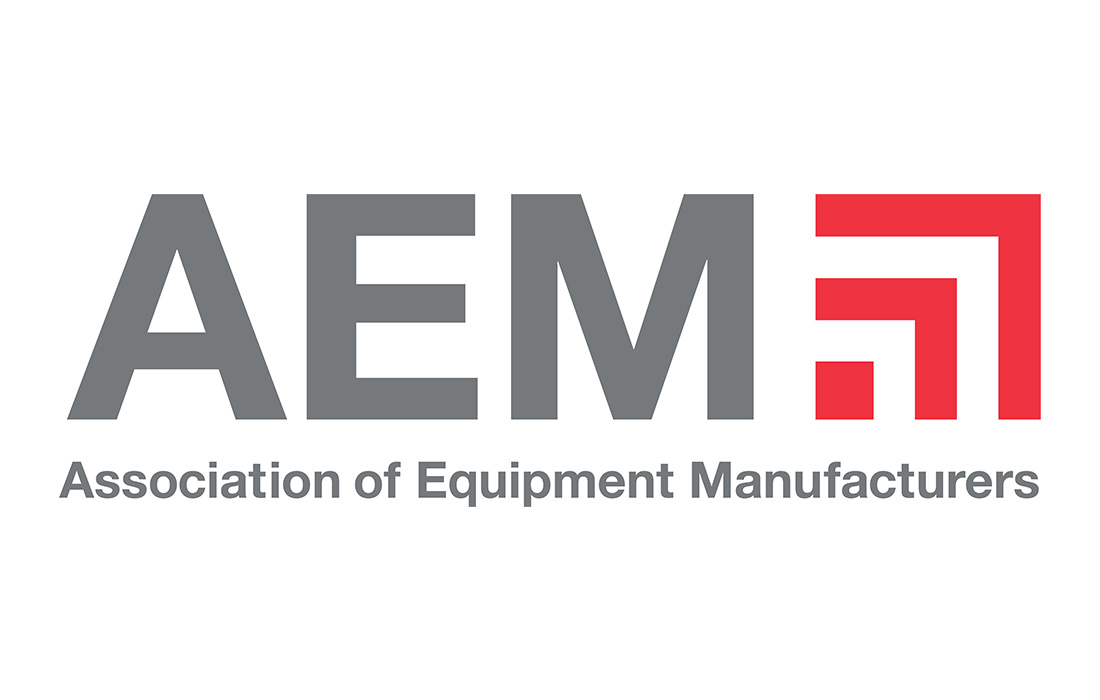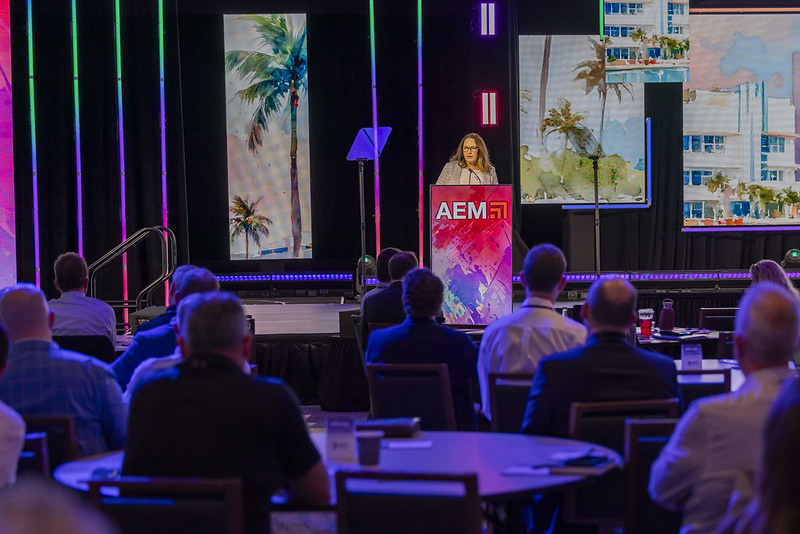By Curt Blades, AEM Senior Vice President --
As a farm kid from Missouri, I’ve always been fascinated by the evolution of agriculture and construction. Today, as a senior vice president at AEM, I focus on everything from advocacy and innovation, to regulation, sustainability, and safety. Despite constant change and industry advancements, these topics are even more relevant now than they were when AEM was founded more than 130 years ago.
I recently had the opportunity to present at Sherwin-Williams Innovation Days in Fresno, California. The intimate event, hosted by the company’s Heavy Equipment team, created a valuable space to share insights and dig into the big-picture issues affecting our industries.
While I usually take a positive tone, this year’s presentation was unfortunately not as optimistic. Market headwinds, shifting regulations, and uncertainty are clouding outlooks, making it extremely difficult to plan effectively for the future. But that is exactly why it’s important to share what we see now. Staying informed is critical during these times, and companies with the ability to pivot quickly will gain the upper hand. Here are a few key themes from the discussion.
Industry Sentiment: A Tough Outlook for Now
The heavy equipment industry has experienced significant shifts – and current conditions are not promising. Each quarter, AEM surveys more than 3,000 heavy equipment professionals, asking how they feel about the market. Recent data tells the challenging story of optimism slipping away, especially in the agriculture sector.
Since 2019, we've seen wild market swings. The COVID-19 pandemic triggered a supply shock, followed by a surge in demand. Then inflation hit and interest rates came into play. The 2024 election gave us a little more confidence, but then the tariffs and trade wars brought sentiment back down again.
Right now:
-
Tractor and combine sales are soft. Low-horsepower tractor sales are well below the five-year average, and margins for high-horsepower tractors are slim.
-
Dealer inventory is high and machines are taking longer to sell, tying up space and capital.
-
Average equipment age is relatively young, reducing the urgency to buy new.
However, there are a few bright spots worth noting. Farm income is projected to increase in 2025, mainly due to government incentives and efficiency advancements.
Infrastructure projects are also ramping up, creating some optimism in the construction market. Interestingly, a main driver of U.S. construction right now is data centers, which are being built all over the country, sparking new demand for construction equipment and materials.
Looking Ahead: Macro Trends Reshaping Our Industries
AEM’s Future of Food Production and Future of Construction reports track major global shifts impacting the agricultural and construction markets. In the agricultural report, there are 13 trends identified, but three stood out in the Innovation Days discussion.
Redefining Sustainability
Sustainability is not new, especially in the agricultural industry. Yet, the way we talk about it is evolving. Once, it was all about recycling, carbon emissions, and greenhouse gases. Now, the conversation is shifting to focus on doing more with less – being more productive, while using the same number of resources. This simple change in wording positions sustainability as a smart business strategy, rather than an environmental program – sparking a new wave of adoption.
A Rise in Precision Agriculture
For years, farmers have been increasing their yields, operational efficiency and profits through things like genetic selection, nutrients and fertilizers. Now, precision agriculture is gaining traction. Instead of just being more sustainable, precision farming is now seen as an efficiency driver that adds economic value.
The Rising Need for Data
What’s interesting here is that precision agriculture is based on data. Most farms are family-owned, passed down through generations of people that have learned every detail of the land. Now, that institutional knowledge is quickly being replaced by data. This is not only changing the way that farms are owned and operated, but it’s also creating a critical need for data – and the machines that capture the data.
The construction industry has not adopted the use of data as quickly or openly as agriculture has, mainly because the workforce is set up differently. There are no real incentives for construction crews to invest in innovative technology when they can do the same job and make the same money without it. However, that is starting to shift as awareness around the societal and environmental costs of construction grows. Municipalities and job owners are beginning to demand the use of technology to ensure safety, accuracy, and efficiency. In turn, opening the door for more autonomous construction equipment.
Navigating Economic Volatility
The economic landscape of manufacturing is changing fast and unpredictably. Tariffs and trade tensions have added uncertainty, with sweeping tariff announcements followed by sudden pauses. Policy priorities are shifting, leaving many in the industrial sector struggling to plan long term.
The key takeaway here is to remain agile and informed. A bit of patience and adaptability are critical right now, as everyone is forced to wait and see what happens next. The good news is that we’re all in the same boat, but those who can pivot quickly will have the advantage as things pan out.
Stay up to date as much as possible. Lean into events like Sherwin-Williams Innovation Days, which provide valuable industry insights in a local, more accessible format. AEM also has a ton of resources to help keep you informed, so don’t hesitate to reach out.
Despite all of today's challenges, there are some exciting advancements on the horizon. The market is tough, and change is constant right now, but progress is being made.





